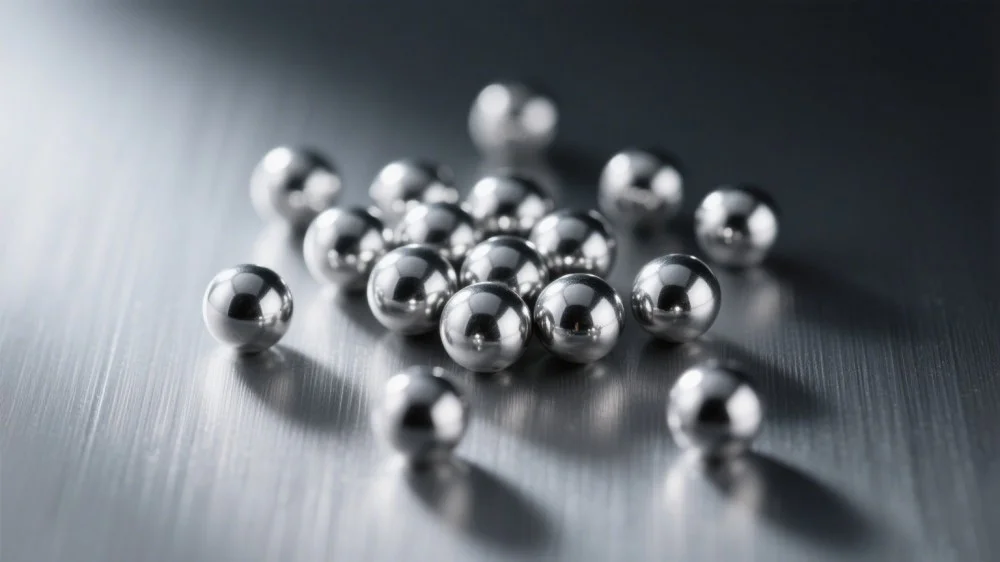- This topic is empty.
-
AuthorPosts
-
2025-11-21 at 5:56 pm #7830
Steel balls are fundamental components in countless mechanical and industrial systems—from bearings and automotive assemblies to precision instruments and aerospace mechanisms. Behind their uniform size and flawless finish lies a meticulous and multi-stage manufacturing process designed to achieve consistent quality and performance. In this blog post, Changzhou eurasian, as professional industrial steel balls manufacturing factory, will share the manufacturing process of high quality precision steel balls for sale.
Raw Material Inspection in Steel Ball Production
Every precision steel ball begins as a high-quality steel wire. Upon arrival at the manufacturing facility, the raw material undergoes a thorough inspection. Technicians verify the diameter accuracy, review the supplier’s material certificate, and conduct a visual examination for surface defects, inclusions, or inconsistencies.
Only wires meeting strict metallurgical and dimensional criteria proceed to the next step—ensuring the integrity of the entire production chain.Cold Heading: Shaping the Initial Steel Ball Blank
The cold heading process is the first mechanical transformation of the wire. Specialized machines cut the wire into precise lengths known as slugs, which are then pressed into a rough spherical shape using two hemispherical dies.
This process occurs at room temperature, maintaining the material’s structural uniformity. High-speed cold heading machines can produce between one to four steel balls per second, depending on the size.
The slight excess material ensures complete filling of the die cavity, forming a preliminary ball blank ready for refinement.Flashing: Removing Excess Material for Precision
After cold heading, each steel ball blank contains a small protrusion or “flash” along its equator. The flashing process eliminates this irregular ridge.
Balls are rolled between two grooved cast-iron plates that grind away the excess material layer by layer.
Multiple passes are performed to ensure uniformity and roundness. The result is a smoother and more symmetrical ball, setting the stage for precise grinding and lapping operations.Heat Treatment: Achieving Hardness and Durability
To enhance mechanical properties, the steel balls undergo heat treatment involving quenching and tempering.
A rotary furnace evenly exposes all parts to controlled heating, followed by rapid cooling in an oil bath—a process that transforms the steel microstructure into martensite.
Martensite provides the high hardness and wear resistance required for applications such as bearing steel balls or industrial precision components.
A secondary tempering process relieves internal stresses and fine-tunes hardness within the specified tolerance range.
Grinding: Refining Size and Roundness of Steel Balls
Grinding is performed both before and after heat treatment. Pre-grinding removes heat-treatment distortions, while finish grinding (hard grinding) defines the ball’s final geometry.
During this phase, parameters such as diameter tolerance, roundness (sphericity), and surface roughness are carefully controlled.
Each batch of steel balls is processed according to machinery capacity, with precision grades categorized by numerical values—the smaller the number, the higher the precision.
This step is vital in producing high-grade precision balls suitable for demanding mechanical and engineering uses.Lapping: Perfecting Surface Finish and Sphericity
Lapping is the ultimate finishing process in precision steel ball manufacturing. Unlike grinding, lapping removes material at a much slower rate but achieves a mirror-like surface finish.
Two phenolic plates combined with a fine abrasive slurry—often diamond dust—gently polish each ball to perfection.
This process enhances surface smoothness and geometric precision, making the balls ideal for applications that demand extreme accuracy, such as aerospace, medical instruments, or high-speed bearings.Cleaning and Surface Preparation
Following mechanical processing, balls are cleaned to remove residual oils, abrasives, and dust particles.
The cleaning process involves several rinsing stages using industrial solvents or ultrasonic systems, ensuring each ball meets stringent cleanliness standards.
For industries like electronics, food processing, and medical devices, advanced cleaning technologies are used to achieve contamination-free surfaces that comply with strict regulatory requirements.Visual Inspection and Quality Control Checks
Every batch of precision steel balls undergoes detailed quality assurance inspections.
Technicians perform visual inspections to detect surface defects such as rust spots, pits, or scratches.
Additionally, roller gauging machines measure and sort balls by size, ensuring that under-sized or over-sized balls are separated.
The quality control department verifies parameters such as hardness, roundness, diameter, and surface finish to ensure compliance with specified precision grades.Final Sorting, Packaging, and Corrosion Protection
Once all quality criteria are met, the steel balls proceed to the packaging stage.
Depending on customer requirements and material sensitivity, balls are packed in plastic bags with vapor corrosion inhibitor (VCI) paper or sealed in VCI bags for extra protection.
Some products may receive a dry-to-touch oil coating to prevent oxidation during transportation and storage.
Packaging labels include precise batch data, size specifications, and weight—ensuring full traceability for industrial and OEM clients.Consistent Quality and Global Applications of Precision Steel Balls
Modern steel ball manufacturing facilities integrate automated production lines, advanced metrology systems, and statistical process control (SPC) techniques to guarantee uniformity and reliability.
Precision balls produced through this meticulous process are utilized across industries such as automotive engineering, robotics, aerospace, and energy systems.
Their dimensional accuracy, hardness, and surface finish directly impact mechanical efficiency, load capacity, and product lifespan.Conclusion
The production of precision steel balls is a perfect balance of metallurgical science and mechanical craftsmanship. From raw wire inspection to lapping and final packaging, each stage is optimized to ensure exceptional roundness, hardness, and durability.
Companies like Hartford Technologies exemplify this process, producing billions of precision steel balls annually for global markets.
Whether used in precision bearings, industrial valves, or motion systems, every ball is a testament to the engineering excellence achieved through decades of refined steel ball manufacturing expertise.http://www.cnballs.cn
Changzhou eurasian -
AuthorPosts
- You must be logged in to reply to this topic.